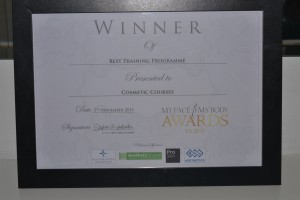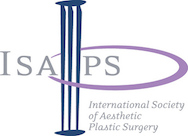There’s plenty to think about when you’re getting your new aesthetic business off the ground. So at Cosmetic Courses, we like to do some of the heavy lifting for you!
You can’t run a successful aesthetic practice without a reliable, affordable supplier of the products you need.
So we’re delighted to say we have partnered up with Pharmacyspace, a fantastic independent pharmacy. All delegates who train with us at Cosmetic Courses can now use Pharmacyspace to supply all their aesthetic pharmacy needs.
The company is directed by Shailesh Patel, a knowledgeable and experienced pharmacist who supplies to both NHS and private practices.
Why use Pharmacyspace as your aesthetic pharmacy?
1. Competitive prices
Managing your costs is vital, especially in the early days when you’re still trying to build up your client base. So anywhere you can make savings will help your business grow. The competitive prices of Pharmacyspace keep the costs of your products down so your margins are healthier from the get-go.
2. Tailor-made service
Rather than having to order from multiple suppliers, Pharmacyspace can supply everything you need for your clinic so you only need one account. That means only one supplier to pay, so it’s easier to keep track of invoices, as well as being more convenient when it’s time to order in fresh supplies.
3. Easy ordering process
With so much to think about in your business, any aspect that can be streamlined and simplified means less stress for you. Pharmacyspace have made their ordering process as simple as possible so you can quickly and easily get the products you need.
4. Punctual delivery
It goes without saying that the last thing you need when you’ve got patients clamouring for treatment is to run out of product! Your patients may end up going to your competitors and – if they have a great experience – sticking with them. Which could be incredibly costly in the long run. At Pharmacyspace, they make every effort to deliver products promptly, so you’ll always have the products you need when you need them.
More about Pharmacyspace – from Shailesh
Pharmacyspace is a family-owned business based in Aylesbury, Buckinghamshire. It was established in 2011 as an NHS registered pharmacy providing both NHS and private services.
Our sister company Lynam Pharma Limited is our wholesale business which is registered with the MHRA. Both businesses allow us to support aesthetic professionals in their day-to-day practice with both their pharmaceutical and medical consumable needs.
Our vision is to provide a trusted and cost-effective service for clinic supplies in a manner which is simple and straightforward for you. Our dedicated staff are on hand to discuss your clinic needs and our partnership with Cosmetic Courses allows us to ensure you get the support you need in a timely manner.
Shailesh is the superintendent pharmacist of Pharmacyspace. He has had a varied career; initially working in hospital pharmacy at University College London where he completed his Masters of Science in Clinical Pharmacy, then in Australia as a clinical pharmacist before returning to the UK to work for both GSK and Apotex UK Ltd, and finally working in community pharmacy before establishing Pharmacyspace.
The Pharmacyspace team also includes a registered nurse and pharmacy technician.
For more information on our aesthetic pharmacy partnership with Pharmacy Space, or the courses we offer at Cosmetic Courses, please call the team on 01844 318317 or email us at [email protected].

 The merger between the two former rivals creates a new pharmaceutical ‘supercompany’ which is set to be officially the world’s largest pharmaceutical company by sales.
The merger between the two former rivals creates a new pharmaceutical ‘supercompany’ which is set to be officially the world’s largest pharmaceutical company by sales.




 The My Face My Body Awards were launched to better educate a wider audience about the aesthetic industry. They’ve quickly become one of the most high-profile awards in the industry, attended by experts and thought leaders from the fields of dentistry, cosmetic surgery, aesthetics and beauty as well as journalists and celebrities.
The My Face My Body Awards were launched to better educate a wider audience about the aesthetic industry. They’ve quickly become one of the most high-profile awards in the industry, attended by experts and thought leaders from the fields of dentistry, cosmetic surgery, aesthetics and beauty as well as journalists and celebrities.


 Global plastic surgery body ISAPS (International Society of Aesthetic Plastic Surgery) have released some interesting stats on the number of cosmetic procedures performed in 2014.
Global plastic surgery body ISAPS (International Society of Aesthetic Plastic Surgery) have released some interesting stats on the number of cosmetic procedures performed in 2014.









